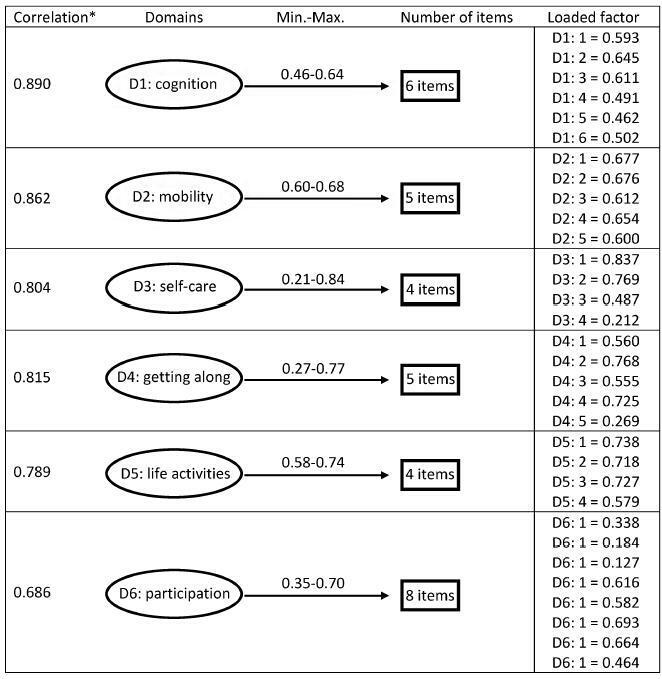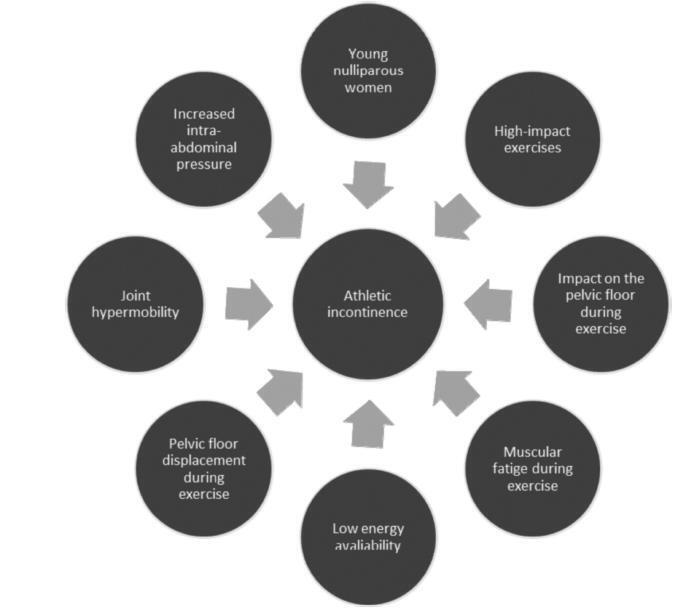Summary
Revista Brasileira de Ginecologia e Obstetrícia. 2005;27(1):44-45
Summary
Revista Brasileira de Ginecologia e Obstetrícia. 2019;41(1):44-52
The aim of the present study was to perform a comprehensive review of the literature to provide a complete and clear picture of isthmocele-a hypoechoic area within themyometriumat the site of the uterine scar of a previous cesarean section-by exploring in depth every aspect of this condition.
A comprehensive review of the literature was performed to identify the most relevant studies about this topic.
Every aspect of isthmocele has been studied and described: pathophysiology, clinical symptoms, classification, and diagnosis. Its treatment, both medical and surgical, has also been reported according to the actual literature data.
Cesarean section is the most common surgical procedure performed worldwide, and one of the consequences of this technique is isthmocele. A single and systematic classification of isthmocele is needed to improve its diagnosis and management. Further studies should be performed to better understand its pathogenesis.

Summary
Revista Brasileira de Ginecologia e Obstetrícia. 2006;28(1):44-49
DOI 10.1590/S0100-72032006000100008
PURPOSE: to evaluate the influence of abstinence period on seminal characteristics in infertile men and to establish a better seminal quality after pooling the samples. METHODS: a retrospective study was performed on 88 oligozoospermic (n=25), asthenozoospermic (n=43), and oligoasthenozoospermic (n=20) men whose partners underwent intrauterine insemination between September 2002 and December 2004. We excluded men with a normal semen analysis or women with abnormalities suggestive of infertility. Each man produced two semen samples in a short period of time (30 min to 1 h). We evaluated semen volume, total motile sperm count and percentage sperm motility. Comparisons were made between the first and second semen samples. After pooling the samples, we compared the total motile sperm count between the first sample and the pooled samples. Statistical evaluation was performed by Student's t test and the chi2 test. RESULTS: in oligozoospermic men, there were no differences in the semen characteristics between the first and the second seminal samples (p>0.05). The total motile sperm count increased significantly in the second sample in comparison to the first sample in asthenozoospermic (42.4±6.8 vs 51.5±7.2x10(6) sperm/mL) and oligoasthenozoospermic men (11.1±7.4 vs 14.35±7.2x10(6) sperm/mL (p<0.05). The pool of two ejaculates increased the total motile sperm count in comparison to the first sample (p<0.05) in oligozoospermic, asthenozoospermic and oligoasthenozoospermic men by 110.5, 110.3 and 136.03%, respectively. CONCLUSIONS: a short period of abstinence is associated with higher sperm motility in infertile men. The pool of two semen samples is a way to increase the total motile sperm count in this group of patients whose wives want to undergo an intrauterine insemination instead of in vitro fertilization.
Summary
Revista Brasileira de Ginecologia e Obstetrícia. 2017;39(2):44-53
To validate the translation and adaptation to Brazilian Portuguese of 36 items from the World Health Organizaton Disability Assessment Schedule 2.0 (WHODAS 2.0), regarding their content and structure (construct), in a female population after pregnancy.
This is a validation of an instrument for the evaluation of disability and functioning and an assessment of its psychometric properties, performed in a tertiary maternity and a referral center specialized in high-risk pregnancies in Brazil. A sample of 638 women in different postpartum periods who had either a normal or a complicated pregnancy was included. The structure was evaluated by exploratory factor analysis (EFA) and confirmatory factor analysis (CFA), while the content and relationships among the domains were assessed through Pearson's correlation coefficient. The sociodemographic characteristics were identified, and the mean scores with their standard deviations for the 36 questions of the WHODAS 2.0 were calculated. The internal consistency was evaluated byCronbach's α.
Cronbach's α was higher than 0.79 for both sets of questons of the questionnaire. The EFA and CFA for the main 32 questions exhibited a total variance of 54.7% (Kaiser-Meyer-Olkin [KMO] measure of sampling adequacy = 0.934; p < 0.001) and 53.47% (KMO = 0.934; p < 0.001) respectively. There was a significant correlation among the 6 domains (r = 0.571-0.876), and a moderate correlation among all domains (r = 0.476-0.694).
The version of the WHODAS 2.0 instrument adapted to Brazilian Portuguese showed good psychometric properties in this sample, and therefore could be applied to populations of women regarding their reproductive history.

Summary
Revista Brasileira de Ginecologia e Obstetrícia. 2019;41(7):440-448
To describe a series of cases of ovarian Sertoli-Leydig cell tumors (SLCTs).
Retrospective review of 12 cases of SLCT treated at the Hospital do Câncer de Barretos, Barretos, state of São Paulo, Brazil, between October 2009 and August 2017.
The median age of the patients was 31 years old (15-71 years old). A total of 9 patients (75.0%) presented symptoms: 8 (66.7%) presented with abdominal pain, 5 (41.7%) presented with abdominal enlargement, 2 (16.7%) presentedwith virilizing signs, 2 (16.7%) presented with abnormal uterine bleeding, 1 (8.3%) presented with dyspareunia, and 1 (8.3%) presented with weight loss. The median preoperative lactate dehydrogenase (LDH) was 504.5 U/L (138-569 U/L), alpha-fetoprotein (AFP) was 2.0 ng/ml (1.1-11.3 ng/ml), human chorionic gonadotropin (β-hCG) was 0.6 mUI/ml (0.0-2.3 mUI/ml), carcinoembryonic antigen (CEA) was 0.9 ng/ml (0.7-3.4 ng/ml), and cancer antigen 125 (CA-125) was 26.0 U/ml (19.1-147.0 U/ml). All of the tumors were unilateral and surgically treated. Lymphadenectomy was performed in 3 (25.0%) patients, but none of the three patients submitted to lymphadenectomy presented lymph node involvement. In the anatomopathological exam, 1 (8.3%) tumor was well-differentiated, 8 (66.7%) were moderately differentiated, and 3 (25.0%) were poorly differentiated. A total of 5 (55.6%) tumors were solid-cystic, 2 (22.2%) were purely cystic, 1 (11.1%) was cystic with vegetations, and 1 (11.1%) was purely solid, but for 3 patients this information was not available. The median lesion size was 14.2 cm (3.2-23.5 cm). All of the tumors were at stage IA of the 2014 classification of the International Federation ofGynecology andObstetrics (FIGO). A total of 2 (16.7%) patients received adjuvant treatment; 1 of themunderwent 3 cycles of paclitaxel and carboplatin every 21days, and the other underwent 4 cycles of ifosfamide, cisplatin and etoposide every 21 days. None of all of the patients had recurrence, and one death related to complications after surgical staging occurred.
Abdominal pain was the most frequent presentation. There was no ultrasonographic pattern. All of the SLCTs were at stage IA, and most of them were moderately differentiated. Relapses did not occur, but one death related to the surgical staging occurred.
Summary
Revista Brasileira de Ginecologia e Obstetrícia. 2009;31(9):440-446
DOI 10.1590/S0100-72032009000900004
PURPOSE: to verify the occurrence ratio of pica in pregnant women and its impact on the mother and newborn health. METHODS: prospective study with 227 adult pregnant women and their newborns treated at the Maternity School of Universidade Federal do Rio de Janeiro, between 2005 and 2006. Pica has been considered as the ingestion of inedible substances or atypical food combinations. The data was collected was done by medical chart review and interview. RESULTS: Pica was referred to by 14.4% of the women, 42.1% of whom practiced it daily. The onset occurred in the second gestational trimester in 46.7% of the cases, and, in the third trimester, in 30% of them. Among the alleged reasons, 65% of the women were unable to give them, 15% declared relief of nausea and heartburn and 10% reported reduced stress and anxiety. The practice in the previous gestation/puerperium was referred to by 15% of the women. Pica was not associated with the maternal anthropometric condition, the skin color, the marital status, the maternal schooling and the presence of parasitosis. There was no difference between the average of the total family income and the number of gestations for the women who did or did not have pica. Pica was associated with gestational anemia (p<0.009) and gestational intercurrences (OR=3.5; CI95%=1.6-7.9). As for the baby, pica did not interfere in the health parameters at birth: weight, gestational age and intercurrences. CONCLUSIONS: pica must be investigated at prenatal assistance and recognized as a risk factor for the mother's health.
Summary
Revista Brasileira de Ginecologia e Obstetrícia. 2010;32(9):441-446
DOI 10.1590/S0100-72032010000900005
PURPOSE: to evaluate the contribution of diagnostic laparoscopy to approach the infertile couple. METHODS: retrospective analysis of 86 consecutive cases of patients who were accompanied in the infertility appointments and were submitted to diagnostic laparoscopy from January 2004 to December 2006. Eighty-two of these patients had been submitted to hysterosalpingography (HSG) prior to laparoscopy. The laparoscopic findings were analyzed, as well as the accessory procedures, and the results of the hysterosalpingography and of the laparoscopy were correlated. Statistical analysis was performed by the use of the Statistical Package for the Social Sciences 15. The sensitivity and the specificity of HSG were determined and the confidence intervals were calculated with an alpha error of 0.05 (95%CI). RESULTS: the laparoscopy revealed 21 cases of endometriosis (24.4%), 14 cases of uni/bilateral inflammatory disease of the salpinx (16.3%), and 16 cases of pelvic inflammatory disease (18.6%). Adhesiolysis and ablation of endometrial lesions were performed in eight patients. There were also other accessory procedures: two salpingostomies, two paraovarian cystectomies, two ovarian cystectomies and three ovarian drillings. The tubal patency test during laparoscopy was normal in 44 cases (53%), revealed unilateral obstruction in 21 cases (25.3%) and bilateral obstruction in 17 cases (20.5%). The results of the hysterosalpingography were similar to those of the laparoscopy in 44 out of the 82 cases (53.7%). HSG sensitivity was 0.79 (95%CI=0.62-0.9) and its specificity was 0.58 (95%CI=0.42-0.73) when the disease was defined as any form of tubal occlusion detected with the laparoscopy, wheter this occlusion was one-sided or two-sided. HSG sensitivity and specificity were 0.47 (95%CI=0.24-0.71) and 0.77 (95%CI=0.64-0.86), respectively, when the definition of the disease was limited to two-sided tubal occlusion. In nine cases (15.3%) in which HSG had shown normal findings or only a unilateral occlusion, laparoscopy revealed a two-sided occlusion. And in 15 cases (65.2%) in which HSG had shown a two-sided occlusion, laparoscopy revealed normal findings or one-sided occlusion. CONCLUSIONS: the laparoscopy demonstrated its diagnostic and therapeutic relevance, proving to have fundamental importance for the clarification of the tuboperitoneal status. It has permitted the development of concomitant accessory therapeutic procedures, thus defining the best treatment strategy for the infertile couples.
Summary
Revista Brasileira de Ginecologia e Obstetrícia. 2017;39(9):441-442
